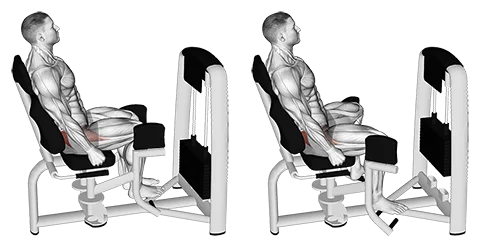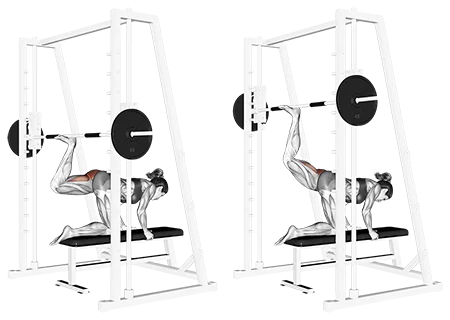The glutes are the powerhouse of your posterior chain. Strong glutes don’t just look good — they’re essential for athletic performance, injury prevention, and everyday strength. Whether you’re squatting, sprinting, or just standing tall, your glutes are doing the work.
What Counts as a "Glute" Exercise?
In Volym, glute-focused movements target:
- Gluteus Maximus: The main driver of hip extension and power.
- Gluteus Medius & Minimus: Important for hip stability and balance.
- Hip Abductors & External Rotators: Support alignment and knee tracking.
Good glute training includes a mix of extension, abduction, and stability work.
Popular Glute Exercises
Here are some of the most effective glute builders in the app:
- Hip Thrusts & Bridges: Direct glute activation with maximum contraction.
- Lunges & Split Squats: Unilateral strength with a glute-friendly stretch.
- Romanian Deadlifts: Target the glutes and hamstrings through the hinge.
- Cable Kickbacks & Band Work: High-volume isolation with control.
- Step-Ups & Bulgarian Splits: Great for glute and balance development.
💡 Pro tip: Focus on feeling your glutes work — slower reps and pauses at the top can make a big difference in activation.
Equipment for Glute Training
You can build your glutes with almost any tool:
- Barbells for hip thrusts, squats, RDLs
- Dumbbells for lunges, step-ups, deadlifts
- Cables for kickbacks, abductions
- Bands for activation and high-rep finishers
- Bodyweight for bridges and bodyweight glute circuits
Try combining heavy lifts with targeted isolation work for best results.
Final Thoughts
Glute strength supports better posture, protects your knees and lower back, and unlocks explosive power. Whether you're training for aesthetics, strength, or function — don’t skip your glutes.
Train ‘em like you mean it 🍑
2–3 times a week works well, mixing heavy compound lifts with higher-rep isolation work.
Hip thrusts are top-tier for activation, but don’t skip lunges, RDLs, or step-ups — they all play a role.
Yes — especially with tempo, volume, and bodyweight progressions. Bands and bodyweight circuits can be surprisingly effective.


_Hips_small.png)
_Hips_small.png)
_Hips_small.png)
_Hips_small.png)
_Hips_small.png)
